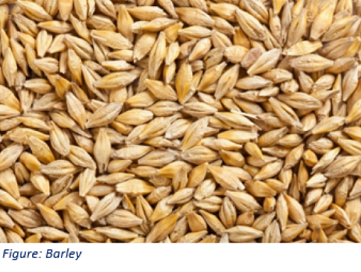BARLEY (Hordeum vulgare)
Barley appears in traditional diets across the globe and is one of the world’s earliest cultivated grains. We know two groups of cultivated barley: two row and six row barley. Barley grains have thick outer hull which is indigestible. This indigestible outer hull must be gently removed to avoid losing some of the grain’s bran layer. For this reason, barley is usually pearled or semi pearled which means that some or all of the bran is polished off. To avoid this problem the hulless varieties of barley have been bred with hulls that are so loosely attached that they fall off during the harvesting. This way the bran and germ are retained.

Barley has around 17 % of dietary fiber which is one of the highest levels in all whole grains. It also contains high levels of soluble fiber - beta glucans. Barley also provides a good source of protein, phosphorus, magnesium, copper, vitamin B3 and thiamin (vitamin B1). Consumption of barley can contribute to reducing blood pressure and lowering total cholesterol. In fact, in year 2008 the FDS approved a qualified health claim for barley products, linking barley with a reduced risk for coronary heart disease. Barley is one of grains which contains gluten (protein) and is therefore not suitable for gluten-intolerant people [2].
HOW TO BE CERTAIN YOU'RE GETTING WHOLE BARLEY?

References:
1. Oldways Whole Grains Coucil. Barley – February grain of the month
2. Oldways whole grains coucil. Gluten free whole grains
3. Oldways whole grains coucil. Whole grains A to Z